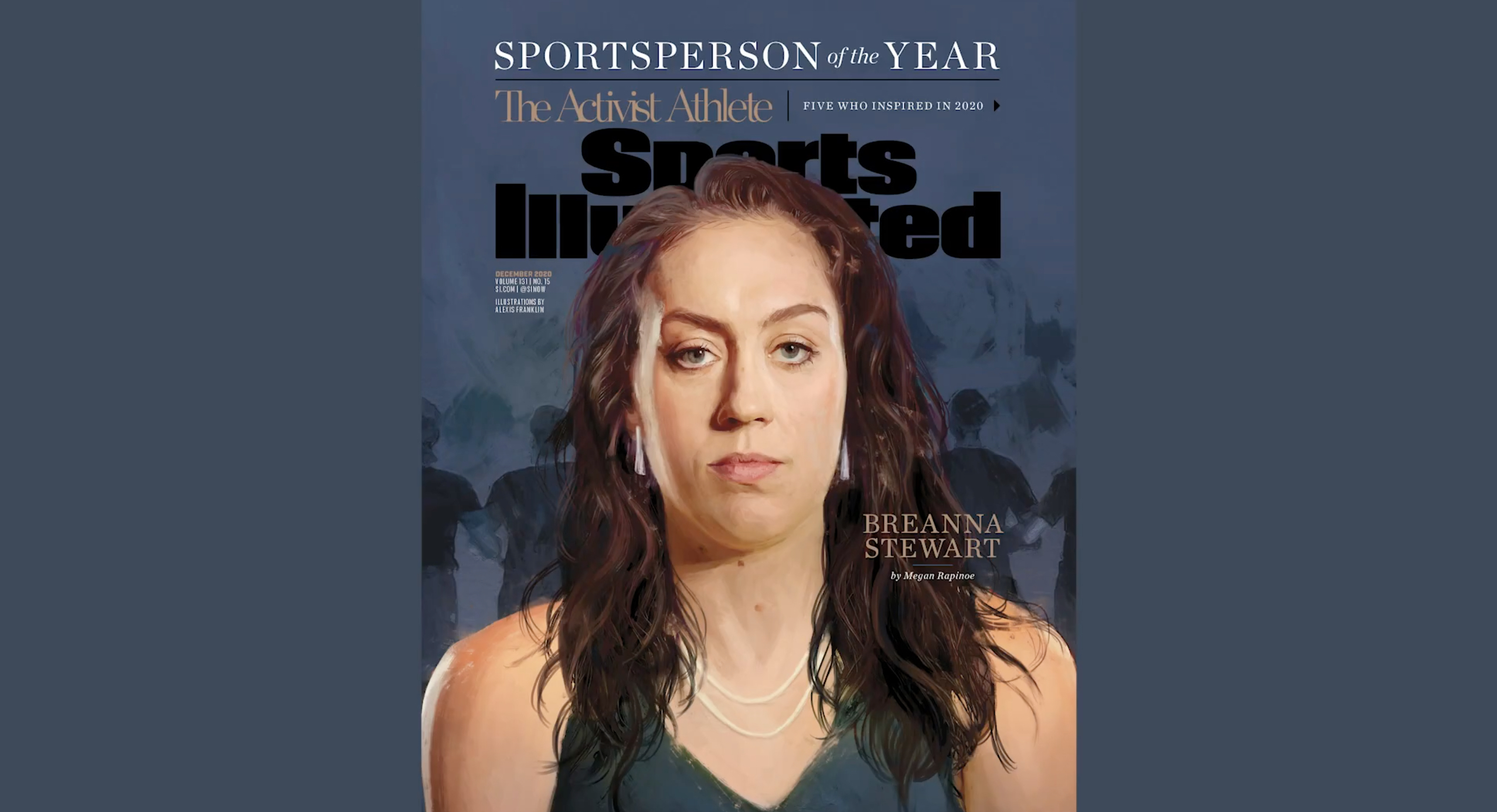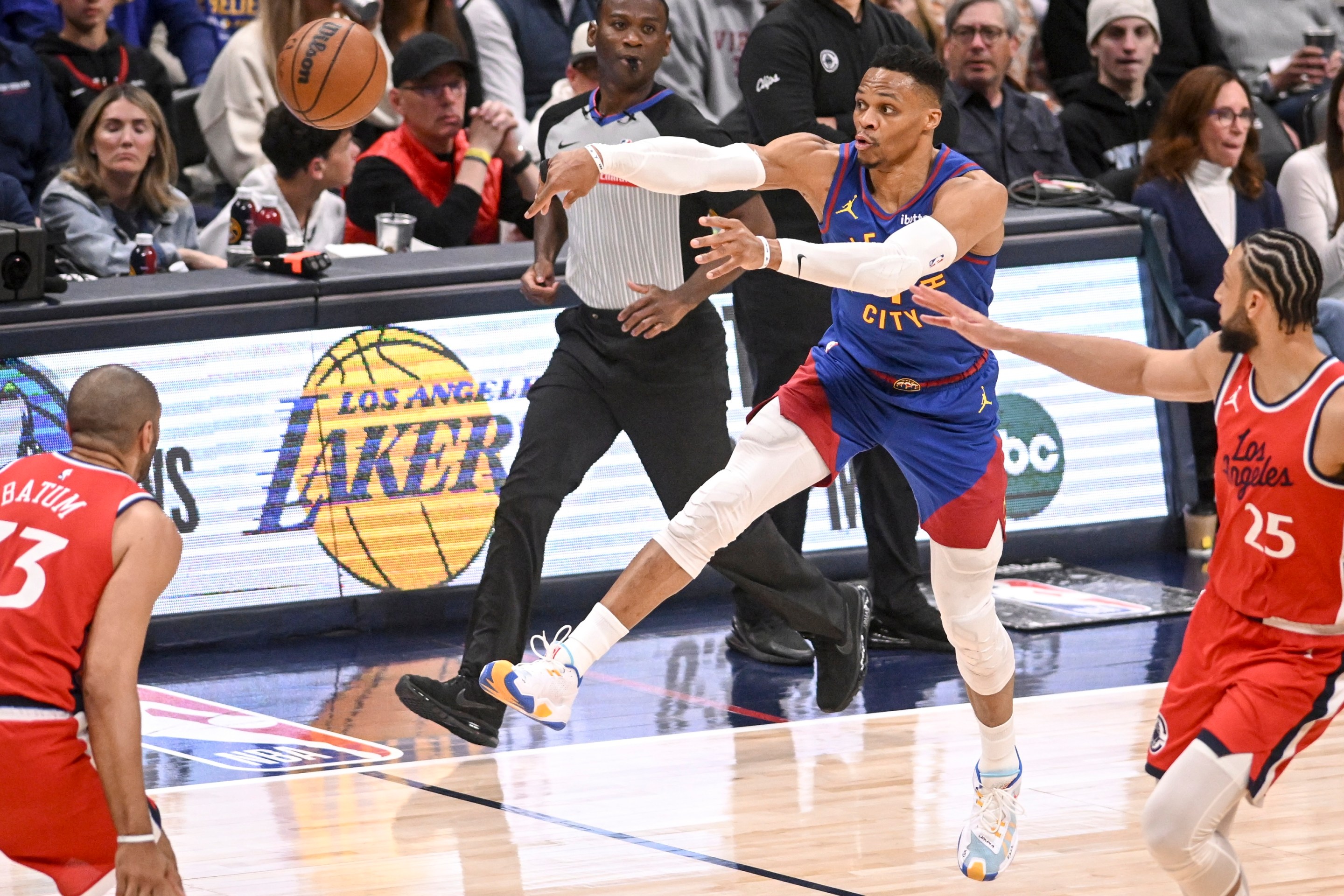For the last few months, I’ve been captivated by a Twitter account called @WNBA_vintage, which spits out an assortment of interviews, promos, and highlights from the first eight or so years of the league. Fans of women’s basketball are sometimes so preoccupied with staking out the game’s future that they neglect its past. There’s something comforting about seeing those bits of history preserved and made known, even something so simple as a clip of an old favorite All-Star, a fuzzy six-second playoff game preview, or the trill of a horn in ESPN’s abandoned, funk-inspired WNBA jingle.
Like with any time capsule, though, the era’s particular disquiet pulses underneath. One typical @WNBA_vintage post, a 2003 advertisement, finds the players in cocktail dresses and suggestive pouts. In another, the glamour shots—miniskirts and halter tops, this time—are interspersed with footage of players hooping on a soundstage. The music, some off-brand pop-punk princess anthem, lends it all the air of your favorite teen sitcom.
Every player in these old commercials meets a certain standard of girl-next-door-hood. They are uniformly long-haired, svelte, wearing makeup. At least two in each ad are white. The idea of women’s basketball history sounds nice enough; confronting it is less pleasant. If you do, you find a WNBA—here meaning the business, not the players—wracked with anxiety about who should be allowed to speak for it. It cannot decide whether it is selling the public on women who happen to play basketball, or on basketball players who happen to be women. In either case, it is selling the public on a specific type of woman, the kind it knows for sure America will find endearing and certainly not threatening. It might just be the most image-conscious league in all of sports.
Take David Stern’s NBA, in which every decision of consequence was mediated by fear about the way white America might read a league of black players. Now imagine the people behind the dress code and the airbrushing of Allen Iverson's tattoos ran another league, this one with the added complication of gender. Stern always defended his fussing about player image as some paternalistic act of care, but to tell someone that who they are is objectionable to a segment of America, and that this segment is worth catering to, is plainly cruel. In the WNBA, the dictum of palatability above all—the idea that blackness or queerness were liabilities—had a stultifying effect. A conspicuous gap appeared between the women who played in the WNBA and the handful of women chosen to represent it.
Time has not entirely closed that gap. Brittney Griner, in 2013, said she’d declined to participate in makeup and fashion lessons the WNBA was still scheduling at its rookie orientation. The mini-controversy of the 2019 season was that the league office had offered the young phenom Breanna Stewart a plum, salaried, public-facing job as a “WNBA Ambassador” while she rehabbed her Achilles injury; it did not do the same for Angel McCoughtry, an All-Star out with a ACL injury that season.
“You’re dealing with the racial issue and then you’re dealing with the gender issue, which is women in sports not being seen as equal or as valuable or as good as the men. And then you have the queer issue, and you just continue to add layers on top of layers. It’s been so hard to market us because we’re a big chunk of queer women of color,” the New York Liberty’s Layshia Clarendon told Tamryn Spruill at The Athletic last year, mentioning the league’s historic failures in this regard.
That queasy history and the not-so-improved present help to better understand Sunday’s news that Sports Illustrated named Stewart one of five Sportspersons of the Year, an award that carried the subtitle “the Activist Athlete,” and to understand the rightful puzzlement and hurt that followed. Awards do not matter in the grand scheme of things, sure, but they can act as a useful measure of whose work is being noticed and whose isn’t. What this one seemed to say was that the conscience of a predominantly black league, and the work it's done on behalf of black women killed by police, is best embodied by Stewart. The 2020 Finals MVP is not unusually outspoken or active in the context of the WNBA. She, like many other white WNBA players, has been supportive of her teammates. But if you were in search of someone to give an “Activist Athlete” award, she would not be at the very top of the list.
.@SInow messed up by not SOLEY acknowledging the WNBA as the SPORTS ACTIVIST OF THE YEAR! Period. It should have been our whole league(including Stewie) to win this award. The W led this entire sports movement! Disgusted at the constant erasure of black women, queer & trans folks
— Layshia Clarendon (@Layshiac) December 7, 2020
And by no means, is this work done for recognition but wow, how tone deaf is recognizing a white woman as the face of a campaign about the lack of reference and visibility for slain black women.
— Imani McGee-Stafford (@imanitrishawn_) December 7, 2020
The potential recipients who come most easily to mind are the ones who opted not to play this season at all: Washington’s Natasha Cloud, who has long been concerned with gun violence; Renee Montgomery of the Atlanta Dream, who spent the summer organizing and whose team is owned by the reactionary senator Kelly Loeffler; or Maya Moore, who took a second season off to work on a wrongful conviction case.
In the introductory note from the editors lies Sports Illustrated’s reasoning for Stewart's selection: “And so our Sportsperson of the Year award goes to five men and women who in 2020 were champions in every sense of the word: champions on the field, champions for others off it.” Stephen Cannella, the co-editor-in-chief, told Outsports Stewart was chosen for being “very active in support of the BLM movement this year” and (more significantly, it is implied) for winning a championship with the Seattle Storm.
Presenting the #Sportsperson of the Year: The Activist Athlete.
— Sports Illustrated (@SInow) December 6, 2020
Congratulations to five who inspired in 2020: @KingJames, @breannastewart, @PatrickMahomes, @naomiosaka and @LaurentDTardif https://t.co/uLEiwWyaDO pic.twitter.com/6i6DSqw0wN
How bizarre. There is the matter of the black women on the Storm—say, Stewart’s All-Star teammate Alysha Clark. But advocating that a different champion win instead might only reinforce the fundamentally odd assumption underlying this crop of awards. In making an actual championship a prerequisite, not only has Sports Illustrated achieved an impressive level of tone deafness (an award for support?), it has also assigned value to only a certain kind of activism: endearing, unthreatening, the kind that doesn’t get in the way. The magazine has bought what any canny sports league is now trying to sell: the champion who happens to be an activist, the first the precondition, the second mere accessorizing.
This is not the first time Cannella has been asked to defend one of the magazine’s dumber cover choices. "In some ways, even though his picture is not there, Colin Kaepernick is there," he said in 2017, after a Sports Illustrated cover with the headline “A Country Divided, Sports United” featured, hilariously, the photoshopped likes of Roger Goodell, LeBron James, Steph Curry, and Jaguars owner Shad Khan linking arms. What exactly unites the soulless commissioner, the black athlete, and the billionaire Trump donor is not clear here. But it is clear, in this slush of conflation, that the magazine is not interested in any real acts of subversion. It will not challenge its readership; it will placate them. "Champion on and off the field" conveniently rules out Moore or Montgomery, or George Hill, who brought the sports world to a stop by not playing, or Kyrie Irving, who dared to ask from the beginning whether there was any sense in the NBA playing at all. What you're left with is the less objectionable, less provocative, most broadly acceptable faces.
This cover... 👀
— SB Nation (@SBNation) September 26, 2017
📸: @SInow pic.twitter.com/axADzvZHnK
An inconvenient truth for the people who make money off athletes is that activism is engaged with by people and in ways that middle America and the executive class are not predisposed to like. It might be “on and off the field,” or it might be entirely off it. It might question the very utility and consequence of the field.
Grappling with that would require sports media to acknowledge what it has tried very hard to avoid: that a world beyond it exists. The activist athlete’s project of late has been to convince the public to see athletes—sportspersons!—as citizens of that world. Sports Illustrated pretends to play along, but its true message is some new, ironic inversion of “Shut up and dribble.” It is “Dribble, and then you can talk.”






